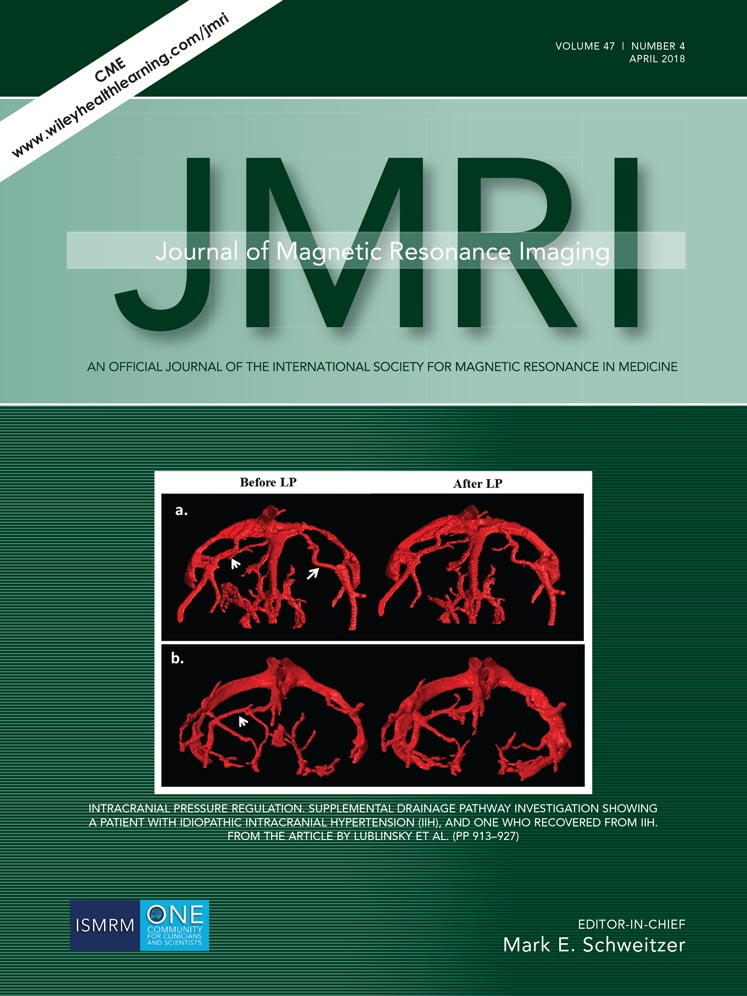Quantitative susceptibility mapping as a monitoring biomarker in cerebral cavernous malformations with recent hemorrhage
Abstract
Background
Quantitative Susceptibility Mapping (QSM) MRI allows accurate assessment of iron content in cerebral cavernous malformations (CCM), and a threshold increase by 6% in QSM has been shown to reflect new symptomatic hemorrhage (SH) in previously stable lesions.
Purpose/Hypothesis
It is unclear how lesional QSM evolves in CCMs after recent SH, and whether this could serve as a monitoring biomarker in clinical trials aimed at preventing rebleeding in these lesions.
Study Type
This is a prospective observational cohort study.
Population
16 CCM patients who experienced a SH within the past year, whose lesion was not resected or irradiated.
Field Strength/Sequence
The data acquisition was performed using QSM sequence implemented on a 3T MRI system
Assessment
The lesional QSM assessments at baseline and yearly during 22 patient-years of follow-up were performed by a trained research staff including imaging scientists.
Statistical Tests
Biomarker changes were assessed in relation to clinical events. Clinical trial modeling was performed using two-tailed tests of time-averaged difference (assuming within-patient correlation of 0.8, power = 0.9 and alpha = 0.1) to detect 20%, 30% or 50% effects of intervention on clinical and biomarkers event rates during two years of follow-up.
Results
The change in mean lesional QSM of index hemorrhagic lesions was +7.93% per patient-year in the whole cohort. There were 5 cases (31%) of recurrent SH or lesional growth, and twice as many instances (62%) with a threshold (6%) increase in QSM. There were no instances of SH hemorrhage or lesional growth without an associated threshold increase in QSM during the same epoch.
Level of Evidence: 1
Technical Efficacy: Stage 4
J. Magn. Reson. Imaging 2018;47:1133–1138.




